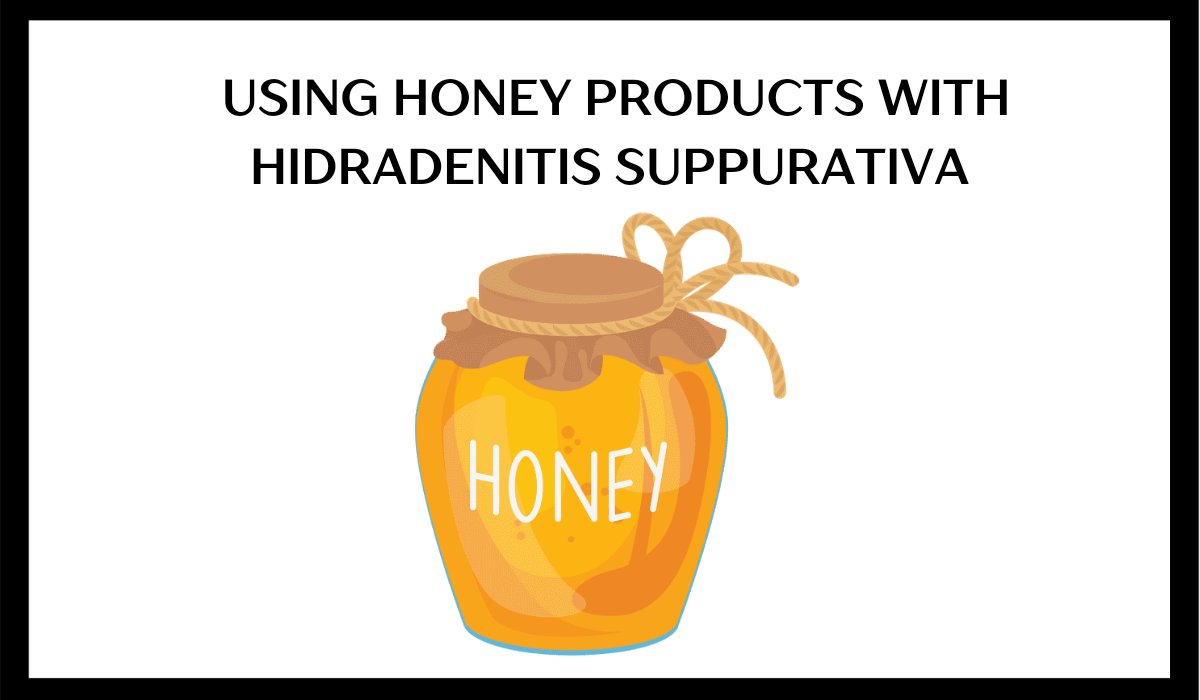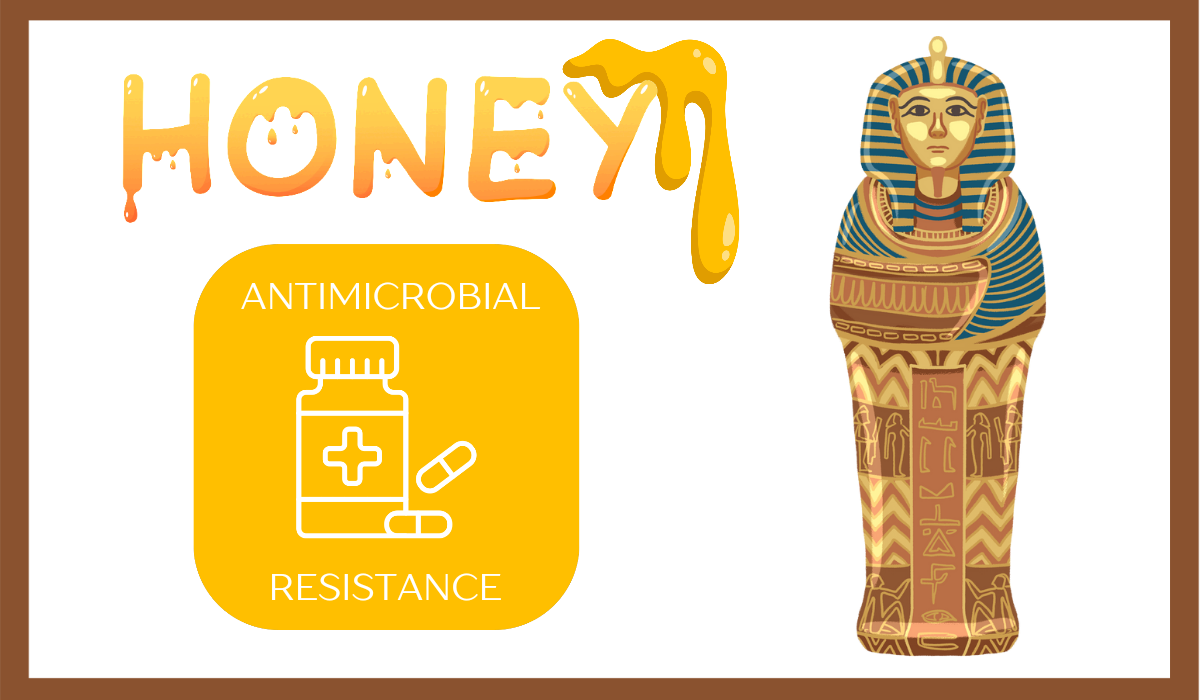Using Honey Products With HS

The HS community has found success using honey products. In an effort to aid your decision-making, I’ll offer additional insights into honey and highlight the top recommended ones based on studies.
Honey, a remedy used for centuries, remains a prominent component in modern wound care. It contains around 82% water, carbohydrates, proteins, phytochemicals, antioxidants, and minerals. Medical grade honey is hygroscopic, meaning it draws moisture out of the environment and thus dehydrates bacteria.
Antimicrobial resistance is an ever-increasing global issue that has the potential to overtake cancer as the leading cause of death worldwide by 2050. Due to the rise of drug-resistant bacteria, numerous antimicrobial agents are no longer effective in treating wounds, leading to an increase in reported failures of treatment methods. In light of this, honey has been considered as an alternative therapy for treating wounds. It is an effective and safe natural remedy that can treat a wide range of wounds and skin lesions, while also inhibiting bacterial growth and reducing odor in both humans and animals. Furthermore, multiple studies have documented the anti-inflammatory and antibacterial qualities.
What type of honey is best to use?
Medical-grade honey (MGH) is the best choice for safety, as it minimizes immune reactions through sterilization to eliminate spores and disease-causing agents. In addition, it is subjected to irradiation treatment.
MGH must meet the criteria outlined below:
- Be pure and organic.
- Free from toxic substances and contaminants.
- Sterilized by gamma radiation following standardized procedures with no pathogenic microorganisms.
- Suitable for medical therapies.
- Comply with standardized production and storage methods, together with all legal and safety regulations.
- Ensure compliance with essential physicochemical criteria for treating wounds..
The following types of MGH have demonstrated success in studies and are commonly utilized in our community. These are different from regular honey in several ways
Manuka Honey - Available for purchase online or at most pharmacies.
Manuka honey as a distinct variety produced by bees that consume nectar from a specific tree in Australia and New Zealand. Its name is Leptospermum scoparium.
Studies have shown Manuka honey can inhibit a diverse range of bacteria, including those resistant to multiple antibiotics (multi-drug resistant bacteria).
Compared to other types of honey, Manuka has an extra ingredient with antimicrobial qualities, called the Unique Manuka Factor (UMF). A rating of UMF 10 or higher is recommended for medicinal use. Manuka also contains a much higher concentration of methylglyoxal (MGO) than regular honey. MGO is an organic compound known for its antibacterial and antiviral properties.
Medihoney - Available for purchase online or at most pharmacies.
This is a mixture of honeys from Australia and New Zealand, primarily from the Leptospermum species (Manuka).
The price of medical grade honey varies depending on the UMF, ounce, and brand, ranging from $9 to $45.
Tip:
It is advisable to steer clear of honey-infused bandages for HS as they tend to be overly infused and too moist. Instead, you can apply the honey individually using dry gauze, ABD pad (both trimmed to fit), or even tissues or paper towels. Not only will you have better control over portion and wound care, but it will also be cost-effective.
A little History:

Honey has been consumed for centuries and is considered one of the oldest food substances. The honey discovered in King Tut’s tomb was both edible and resistant to spoiling. The first written record of honey as a wound-healing agent dates back to 2600-2200 bce. Researchers started documenting honey’s wound-healing properties in the early 20th century. The use of honey temporarily decreased with the introduction of antibiotics in 1940. The rise in antibiotic resistance and the increasing demand for natural remedies have sparked a renewed interest in honey’s antimicrobial and wound-healing properties.
Research Snippets:
Some clinical trials have shown that, when honey was applied topically, it improved wound healing and reduced healing time and scar formation. 34 In addition, honey has been used on infected wounds. Manuka honey, from the Manuka plant and native to New Zealand, has been shown to be beneficial against some resistant bacteria. It has been shown that honey stimulates human monocytes to produce inflammatory cytokines, important in the wound healing process.” In a recent study, it was reported for the first time that a component isolated from Manuka honey stimulates the production of inflammatory cytokines via toll-like receptor 4. The properties of honey that make it antibacterial include the high sugar content and low moisture content." Honey aids in reducing wound inflammation and edema and is soothing and provides local pain relief.
The natural properties of honey as well as its active compounds are crucial for the wound healing process. Natural honey is a viscous fluid; its jelly consistency creates a surface layer over the wound that inhibits the entrance of bacteria and protects the wound from dehydration [2]. Its high sugar content creates a higher osmotic gradient that pulls fluid up through the subdermal tissue and offers an additional glucose source for flourishing cellular components in the wounded area [2,16]. The water activity of honey is less than 0.91 aw, which prevents and controls the growth of bacteria on the wound surface [17,18] and causes fluid flow that flushes slough, debris, and necrotic tissue as well as microorganisms out of the wound. Apart from this, the low water activity of honey helps transport oxygen and nutrients from the deep tissue into the wound area. In addition, the low pH of honey increases tissue oxygenation, while free radicals, which lead to tissue damage, are removed by flavonoids and aromatic acids [19,20].
Medical-grade honey (MGH) is seen as promising wound therapy because it has a wide spectrum of antimicrobial efficacy with no known resistant strains. It has been effective against clinical isolates of Pseudomonas aeruginosa and their associated biofilm formation [43].
Safety Cautions:
Please exercise caution when considering natural (non medial grade) honey as an option. Although natural honey doesn’t encourage bacterial growth, it does contain spores. The sprouting of spores can lead to the development of bacteria that cause diseases like botulism. Botulism is the reason why parents are told not to give their babies honey.
Although uncommon, there is a potential for allergies to honey due to the presence of pollen or bee proteins.
Special Note: Researched, compiled, and written by Denise Fixsen. This information is backed by my 46 years of living with Hidradenitis Suppurativa, 10 years of dealing with multiple chronic illnesses, 36 years of advocacy, and continuous education. And to ensure accuracy, reliability, and trustworthiness, I incorporate peer-reviewed studies and other high-quality sources into my articles and material. I also wanted to inform you that I’ve chosen to end my collaboration with editors on my articles. Although there may be grammar errors due to brain illnesses (mostly), with this said, my content remains reliable, factual, and solid. With genuine TLC.
Medical Disclaimer: This content is solely for information, education, and support. The purpose is not to serve as a replacement for professional medical advice, diagnosis, or treatments. FDA Disclaimer: any materials mentioning treatments, procedures, supplements, etc., have not been evaluated by the FDA and are not intended for diagnosing, treating, curing, or preventing any disease or health condition.
Sources: 10.17795/jjnpp-9487, 10.1097/01.ASW.0000305460.87058.42, PMC7951016, PMC8071826, PMC8388796, PMC8496555, PMID:30855767, doi:10.1016/j.jaad.2019.02.067, doi:10.1016/j.sjbs.2020.10.017, doi:10.1016/j.jcws.2012.04.002, doi:10.3390/antibiotics9110766, doi: 10.1093/ecam/nem175
